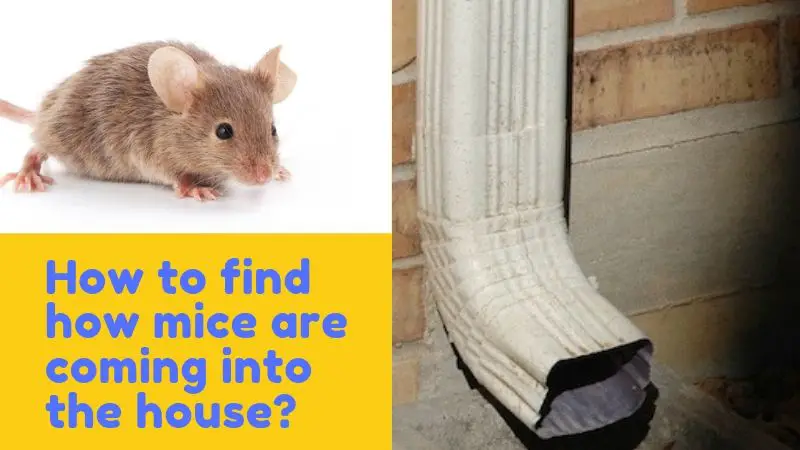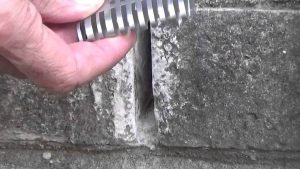Your home may be your private sanctuary, but if this is true, why don’t you keep it clean? The risk of mice infestation may loom large in all homes, but if your home has become the ideal choice for rats or mice to enter and stay warm and nicely fed, it says a lot about your home management standards.
If you’re worrying over how mice are getting into your house, note that it’s not too late, and you can still understand and do a lot to change things around.
How to find how mice are coming into the house?
Here are a few popular reasons for people experiencing rodent problems:
1. Poor sanitation
Poor sanitation at your home could be one reason for mice entering your home. Apart from it causing health concerns for you, it could also make your house a lucrative access point for rats and mice in search of food and water.
2. Garbage scattered all over your home
Mice and rats are unknown to be present in unhygienic spaces, so if there are bits of food or garbage lying in different parts of your home, these scavengers will feed on them and realize that your home is just right for them to be in.
Besides, if your home is not clean, it will be just right for them to live here and raise their litter. Additionally, if you have a bird feeder or residue of food, it will attract mice and rats. Fallen fruit from trees could also bring in the mice.
3. Water bowl
If you leave a water bowl for birds to quench their thirst, it will attract rodents. Sad, yet true, particularly for people who keep water bowls in their front and back yards, or live on the ground floors.
4. Shelter in your home
Rodents are constantly on the lookout for shelter spots that could serve as good nesting places for their litter. Debris, leaf piles, mulch, etc can be perfect for them to nest in. From these spots, they will chew through your home’s siding and enter it.
Rats and mice also squeeze through the tiniest spaces to enter. Mice can enter through spaces as small as a dime and rats the size of a quarter. This makes all parts of your home vulnerable to them. These include gas lines, sewerage, gaps in doors and windows, window sills, etc.
If your home has wooden interiors, beware of rats because they can gnaw through the wood and enter. Additionally, piles of firewood are alluring to rodents. These piles, at first, are enough as shelter to them. They also live in shrubs, discarded furniture or other items.
How to identify mice in your home
When mice and other rodents enter your home and make it theirs too, they contaminate it, inducing disease and bringing harm to you. You can stop this menace in two ways: deny access to them and eliminate the problem using various means.
The first step for you is to find the entry points through which these rodents enter your home. There are a few definite ways by which you can find out how they enter your home. These are:
Chewed material or teeth marks
Mice and rodents can enter through the smallest slit. If they can’t, they will gnaw at it until they carve out enough room to get in. With their sharp teeth, they can shred to bits any material, so if you suspect that there’s a rat infestation in your home, look for gnawed spots or teeth marks around your house. Once you spot them, block them with steel wool till you’re able to mend them permanently.
Rat droppings
Once rodents share your home, they tread a familiar path. In the course of their movements, they usually defecate. So, if you do come across small mouse droppings or larger rat droppings, you can trace the path to their homes and block them sufficiently.
Rub marks
There’s an oily substance in the furs of rats and mice which they leave along baseboards of homes where they infest. By tracing a path of these marks, you can find out their homes and are often very close to their entry points to the home.
How do mice get into your house?
How do mice get into your house? Well, mice are small, agile and determined. These three advantages give them entry into the most difficult to enter and well-kept homes because they find the smallest holes and thinnest cracks in walls, foundations, ceilings, windows, sewer lines and floors to push their way in.
Negligent homeowners do not realize the gravity of having such crevices in their homes until the rat infestation problem is huge and troublesome. They can also enter through the bathtub drains or sink, if drainage pipes are not 100% sealed.
Due to a fall in temperatures in the fall, rat and rodent infestation are low. Once a colony of these critters enters a home and finds it comfortable, warm and safe, they remain there, hardly venturing out. The rat menace multiplies when these rodents proliferate rapidly to a fantastic figure of 200 within months!!
How to find mice entry points
These are some of the leading entry points to a home for mice and rats:
1. Corner posts
To finish off the siding ends at the corners of your home, corner posts are used. J-channels are used as trimming around doors and windows to conceal the ends of the siding. However, rats and mice climb up these hollow corner posts and fit themselves into gaps between two j-channels to gain entry into homes.
To remedy this situation, pads of steel wool mice or copper wool mice can be used to fill all cracks and openings in corner posts and j-channels. They can be sealed using silicone caulk.
2. Cellar doors
Slanted cellar doors on the exterior side of houses leading to their basements often have gaps between doors. These are small enough to let mice sneak in.
This problem can be solved by installing weather stripping so that the doors fit really tightly without any gaps.
3. Foundations
If there are cracks in the foundation, mice can gain easy access to your house. If you have rubble or stacked stone foundation, they are prone to gaps through which these rodents can enter the house.
Any cracks along the sill can be filled with silicone caulk.
4. Garages
If your garage doors are uneven or are left open for long periods, they are prone to mice infestation. Or, if you have too much clutter in your garage, they could attract mice.
The obvious solution to this is to get rid of all your clutter and organize your garage better. Be minimalistic here and close the garage doors when not in use. Fill any slits in the walls and doors with silicone caulk and weather stripping on the doors.
5. Gutters
These critters can also climb along gutters and up downspouts to reach the closest opening to the roof of your house. To prevent this, install chicken wire at the mouth of the downspout so they don’t climb up. For gaps in the soffit, seal with silicone caulk.
6. Chimneys
Being strong climbers, mice can easily enter your home through the chimney. To prevent their entry to your home, install a one-foot wide metal sheet at the chimney’s base. This material will be too slippery for them to scale up and will be the perfect deterrent for them.
7. Openings for utility lines
To operate utility lines, companies have gaps in the side of your home, large enough to let mice enter your home. Once more, seal with silicone caulk.
8. Roof vents
Mice can climb onto roofs very easily and from their gain access to the home. Aluminum and plastic vents on the roof are high enough for mice to enter the attic. At this point, they only have to pass a bug screen, which isn’t difficult.
Determined mice will enter homes by any means—climbing ladders, passing through gaps, climbing up overhanging bushes and even swim through the sewer to enter your kitchen.
Can mice come through floor vents?
By now we have established that if you leave a gap open in your home, however unknowingly, you lay yourself open to attack by rodents. While they can enter from all kinds of slits and cracks, they have also proved to enter from floor vents.
Normally, the ducting around furnaces or fireplaces isn’t always perfectly sealed. This being a warm and welcome spot, rodents love it. When checking for rodents here, examine the rear of the furnace and its sides for any gaps. There may also be gaps in the plumbing holes that extend into the wall in your garage, so check that too.
If you find rodent colonies here, speak to a pest control expert. A trained person can find sure shot ways of preventing rodents from making yours their home too and giving you a fresh start.
Mice may also be present in your HVAC system, where they can harm the heating ducts and other areas of your home. Yet again, a professional is the answer to this problem. By cleaning the duct, you will find mice droppings that were blocking airflow and reducing the heating, implying greater costs. So, the best solution is to put your home in the hands of a qualified and experienced professional.
Preventing mice from entering the home
There are many ways of preventing mice from entering the home. For instance, seal all openings, holes, and cracks with cement or metal. Doors and windows should be completely shut, without any gaps. Food should be stored in metal or glass containers and tightly shut, while waste food should be disposed of without delay.
You can also do the following:
- Invest in mouse-proof materials like steel wool and copper wool, cement mortar, sealing caulk and sheet metal.
- If there’s a gap of ¼ inch or less, install a rubber door sweep that will seal the doors tightly.
- Seal all structural gaps like pipes and fixtures with cement. To prevent mice from burrowing through this while the cement dries, add broken glass to the mix.
- Seal off all possible entry points between the AC vents and pipes.
- Seal the access to your AC and heating units with mesh.
- If your eaves show up gaps between material like foundation and brick, fill them up with caulk, plaster or cement. Else, cover them steel wool or perforated metal.
- If you have a weep hole, keep it sealed with a weep hole cover or a mesh barrier.
Concluding Remarks
While it’s not the best of things to see a rat scuttle across your room as you enter it, there are sure shot ways of getting rid of the critter menace permanently. For one thing, pest control will eliminate them, and there are other ways too such as spraying peppermint oil at their entry points and along their route, setting a cat on them and sealing holes through which they move around.





This article on rodent control was very helpful. Now I think I can find where they are coming in. My problem is chipmunks. Another problem is our attack is not large enough for anyone to enter. But I will work on sealing the outside areas of possible entry.
Thanks for the many tips.